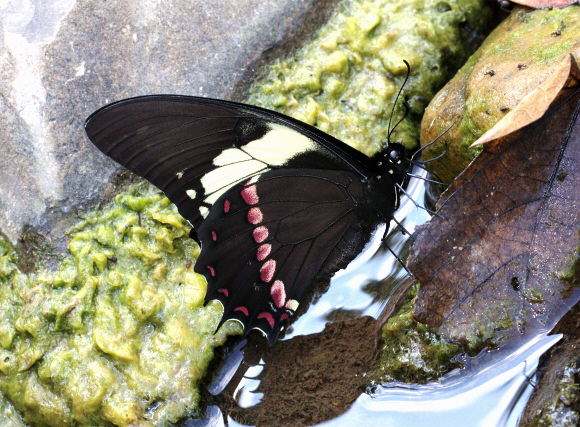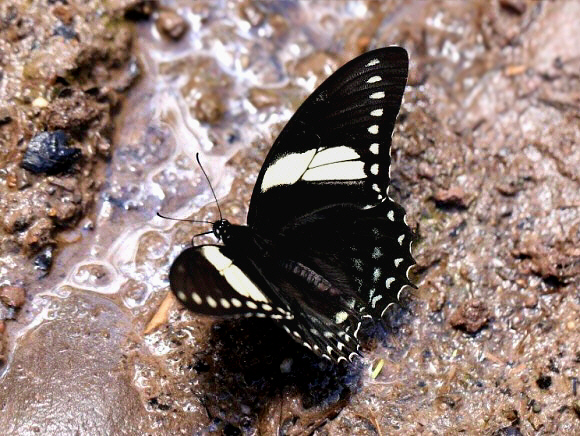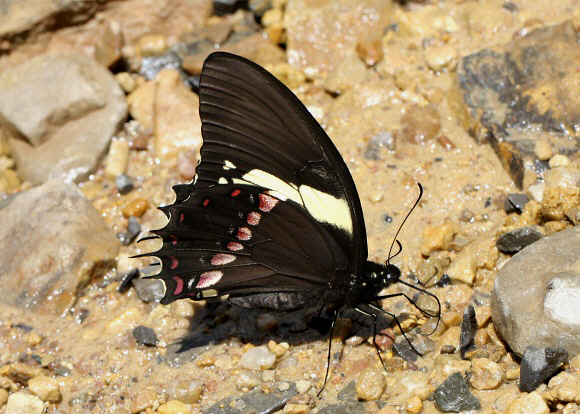
Introduction
The genus Pterourus includes 19 large Swallowtail butterflies. Amongst them are the huge Jamaican endemic P. homerus, and the Tiger Swallowtails multicaudata, eurymedon and glaucus, the latter of which occurs as far north as Alaska.
Most members of the genus look like fairly typical Swallowtails – tailed, marked with creamy-yellow bands on a black ground colour, and with red submarginal lunules on the underside hindwings.
Pterourus menatius is distributed from Mexico to Bolivia, and produces 13 subspecies including the illustrated taxon eurotas which is restricted to Ecuador and Peru.
Habitats
This is primarily a butterfly of pre-montane cloudforests, occurring at altitudes between about 500-1000m.

Lifecycle
This appears to be unrecorded. The early stages of several other members of the genus Pterourus are well documented however, and are likely to be applicable to menatius:
The eggs are round, and laid singly on the foodplants. The caterpillars when young resemble a bird dropping. When fully grown they are green, beautifully marbled with pink and brown. The thoracic segments are marked with a pair of “false eyes” with black and white pupils. If threatened the larva immediately withdraws it’s head, causing the thoracic segments to distend, and thereby greatly magnifying the size of the “eyes”. The resulting snake-like appearance is probably sufficient to startle or frighten a small predatory vertebrate.
Adult behaviour
Males are usually seen in one’s and two’s, puddling at the edges of mountain streams.

